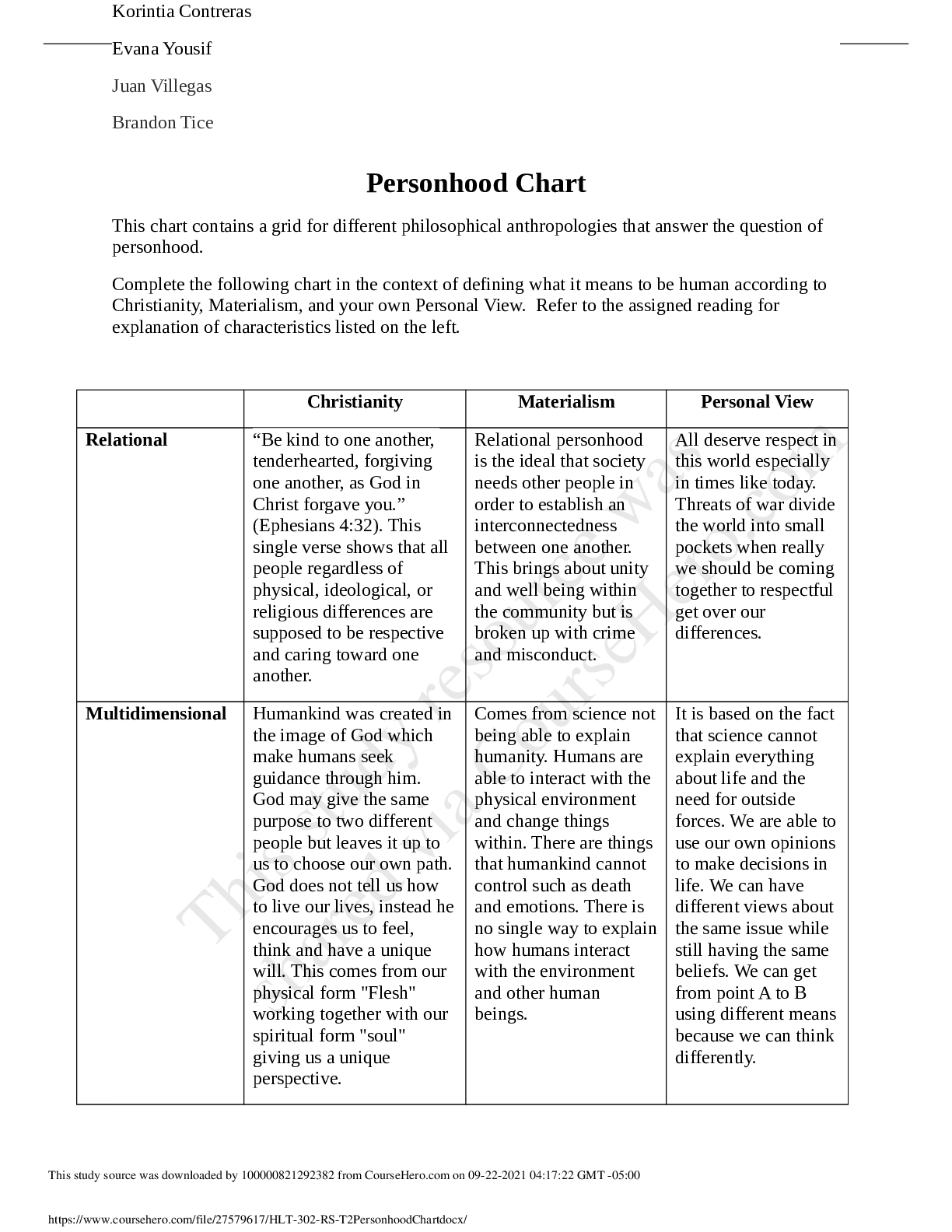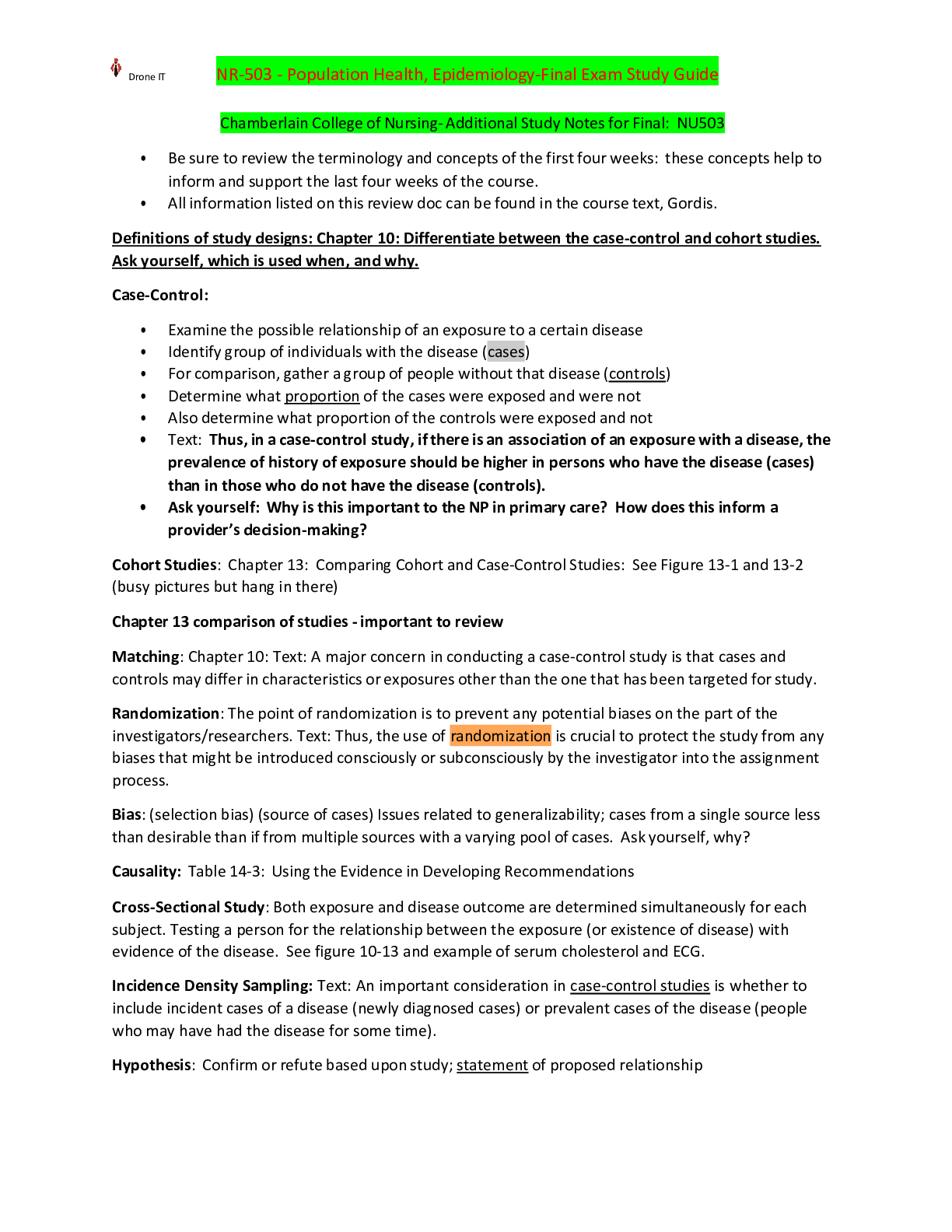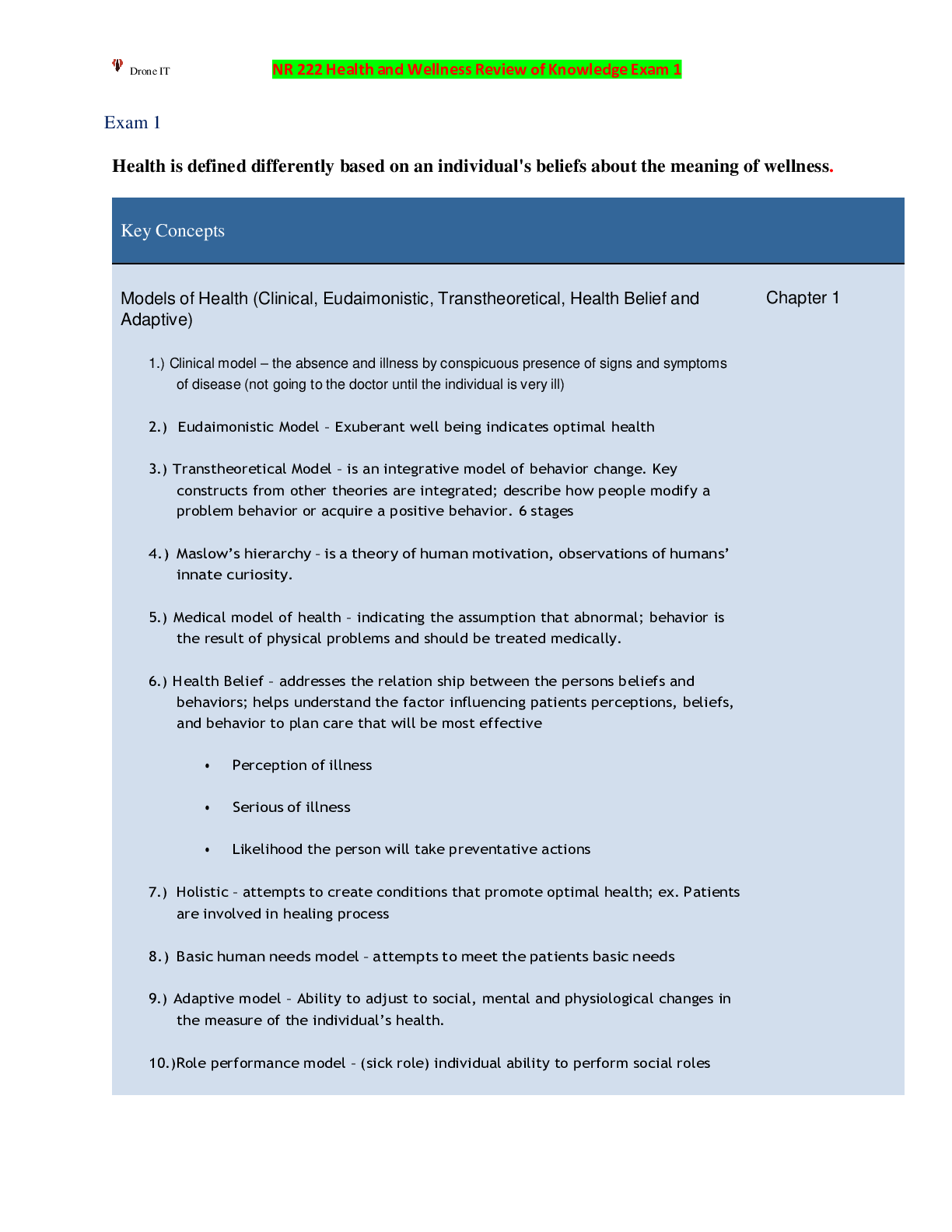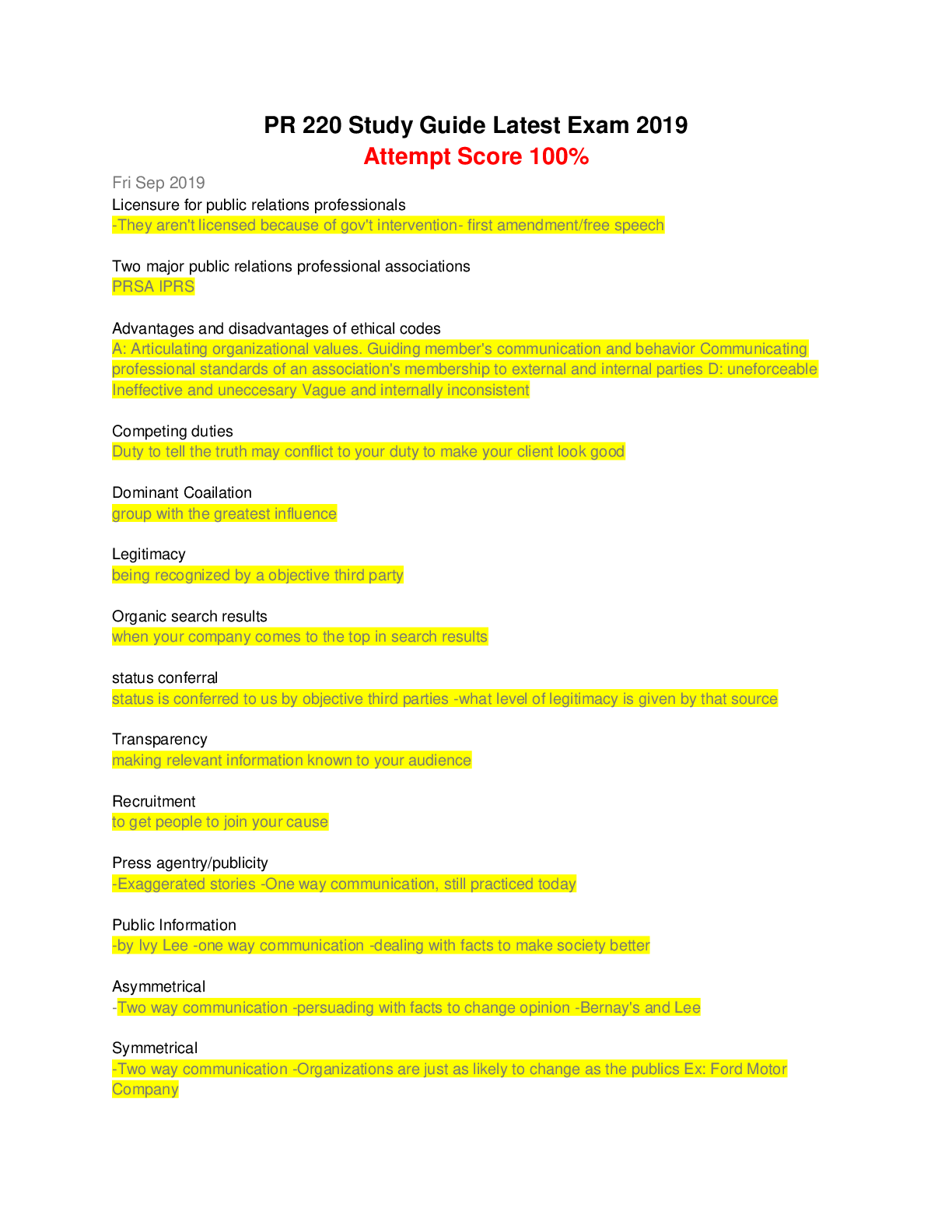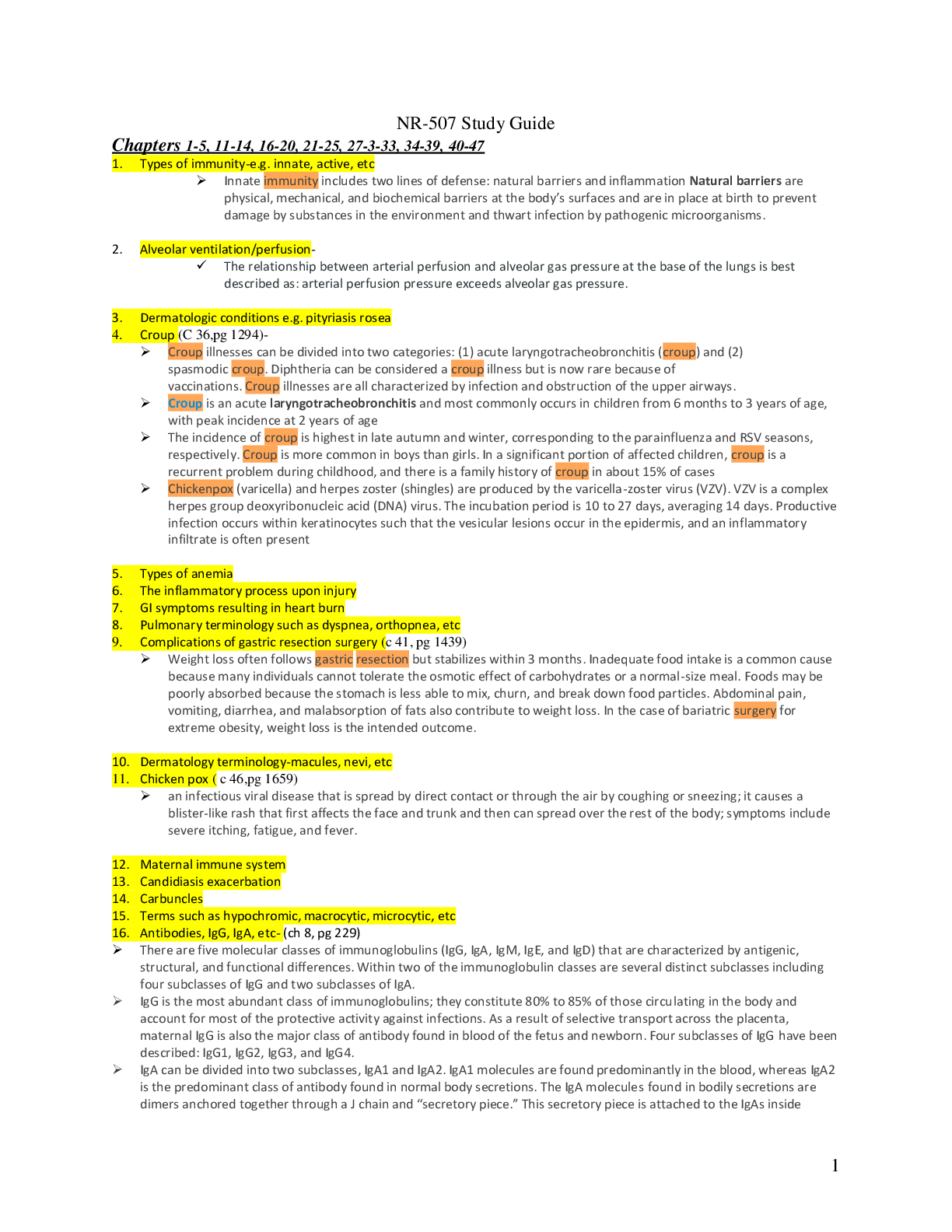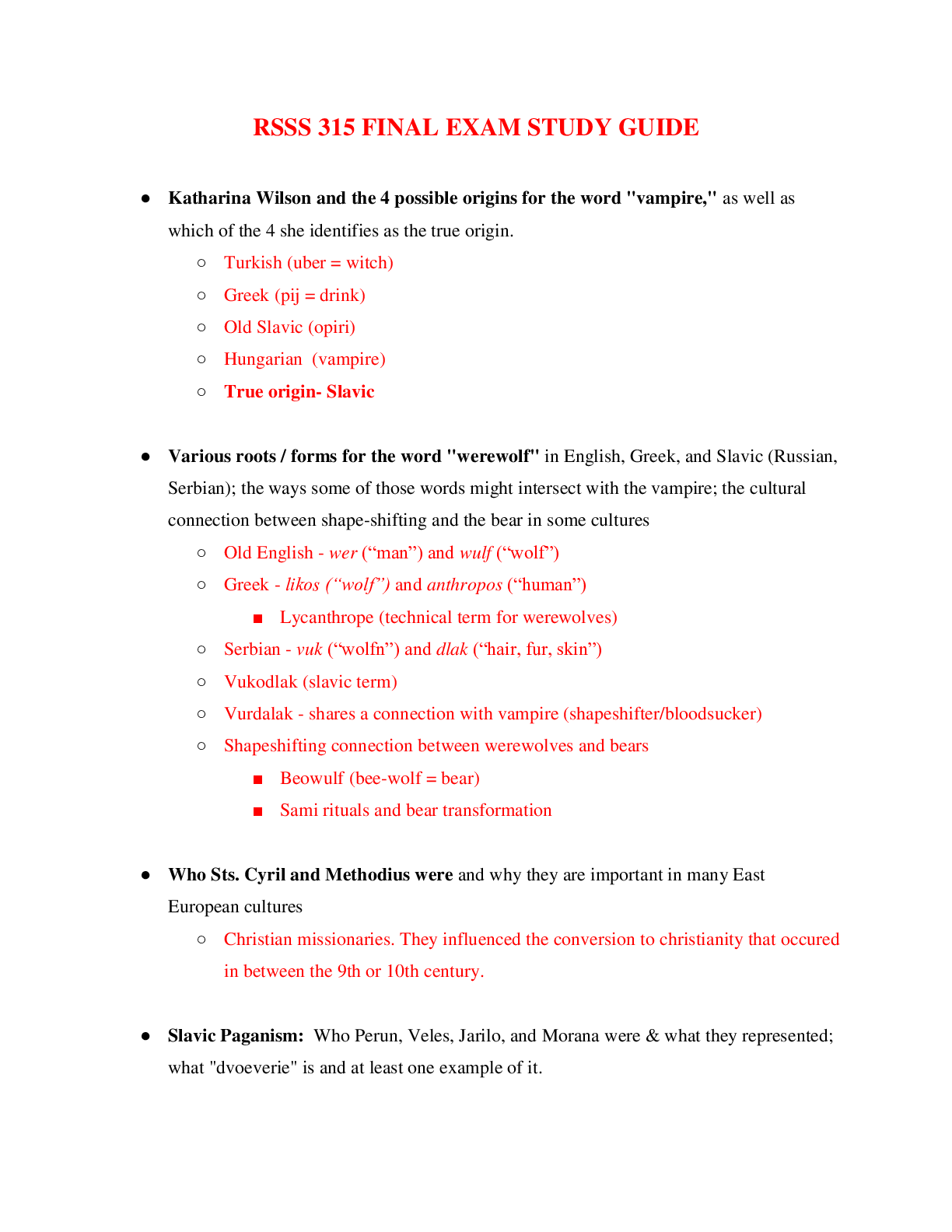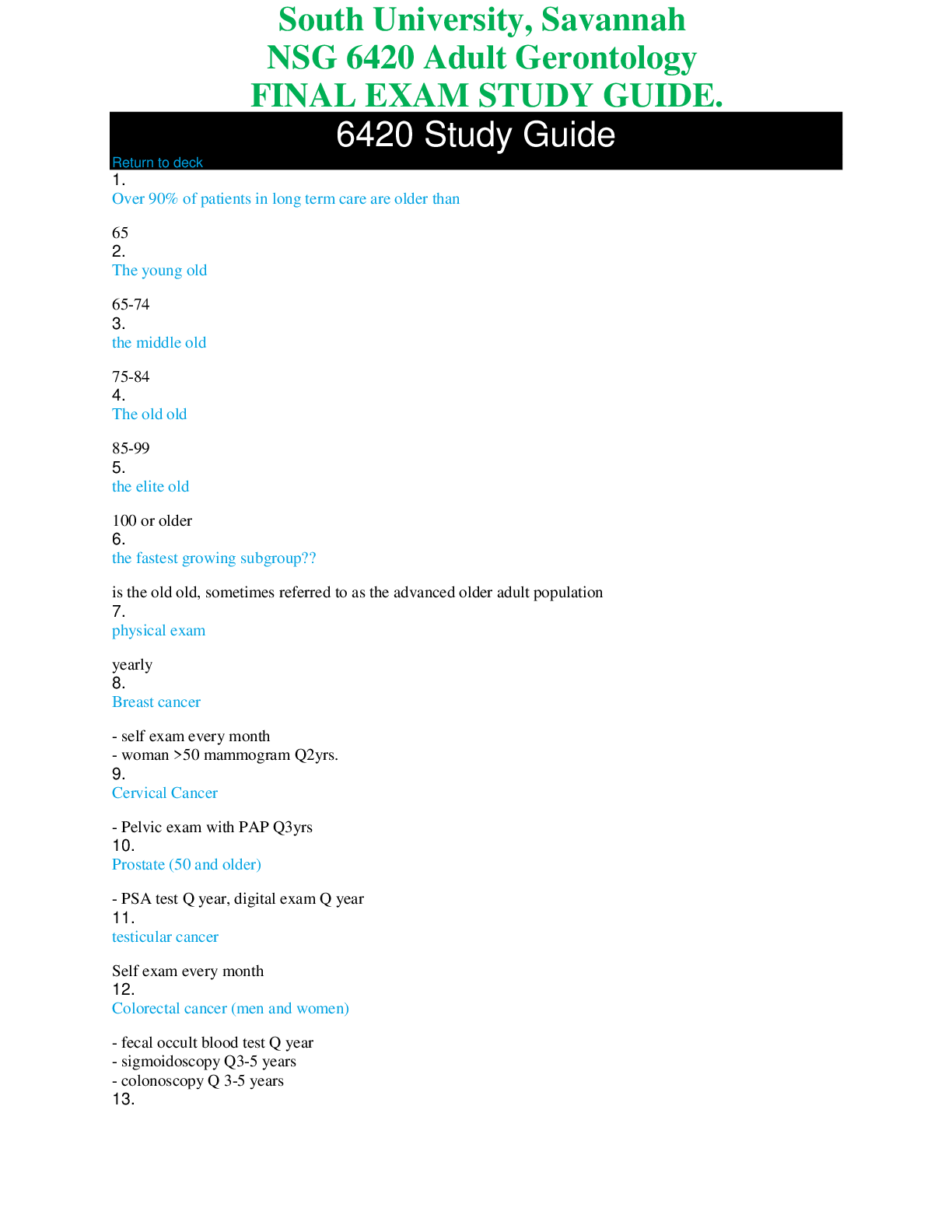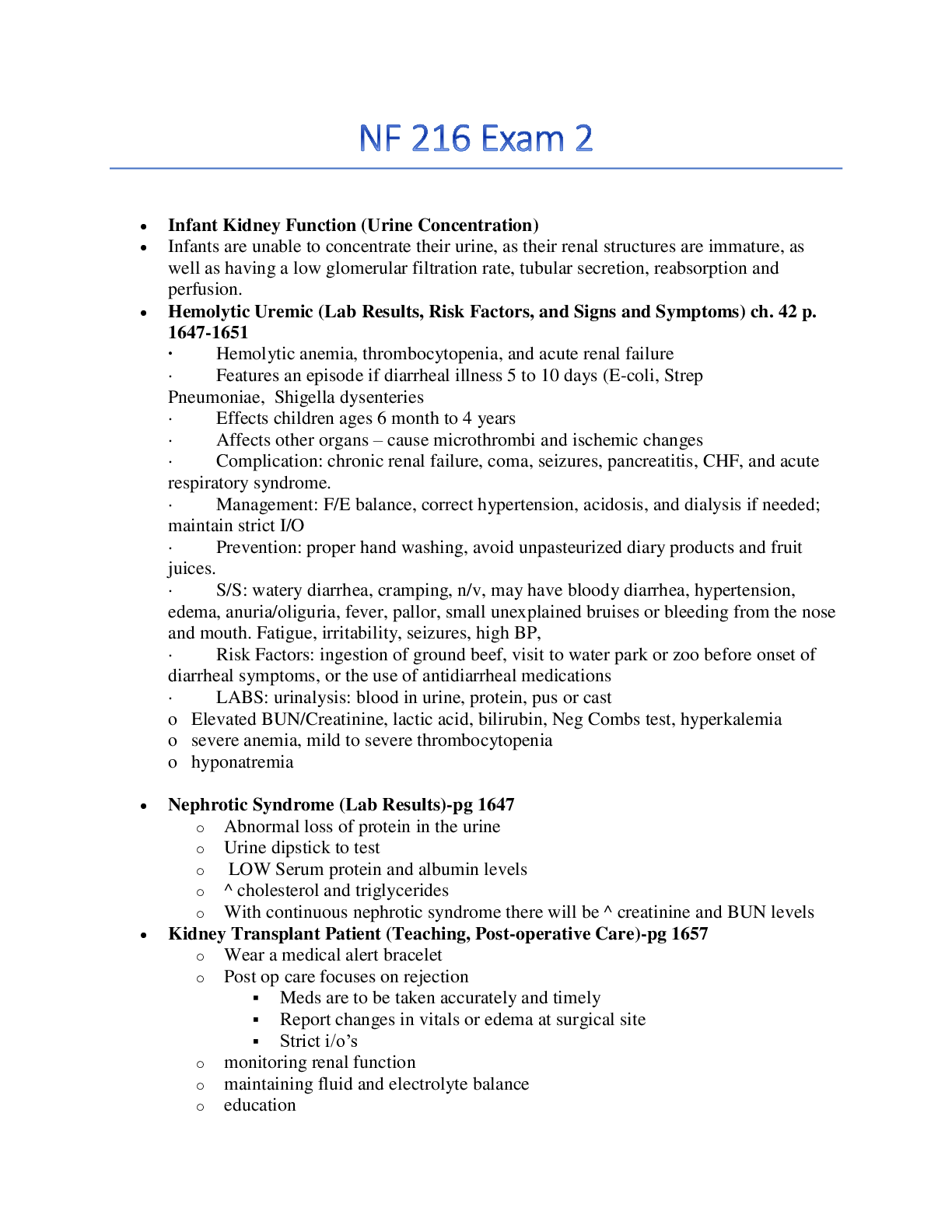*NURSING > STUDY GUIDE > NR-228 Nutrition, Health & Wellness-FINAL Exam Study Guide 2021 (All)
NR-228 Nutrition, Health & Wellness-FINAL Exam Study Guide 2021
Document Content and Description Below
NR-228 Nutrition, Health & Wellness-FINAL Exam Study Guide 2021NR-228 Nutrition, Health & Wellness-FINAL Exam Study Guide 2021NR-228 Nutrition, Health & Wellness-FINAL Exam Study Guide 2021FIN... AL EXAM STUDY GUIDE-NR228 CHAPTER 1 (2 left to answer) How many calories are provided by protein, carbohydrates, fat and alcohol? Protein/Carbs: 4 kcal/gram Fat: 9 kcal/gram Alcohol: 7 kcal/gram What does “nutrient density” mean? Nutrient density assigns the value to a food on the basis of a comparison of its nutrient content with the kcal the food contains. The more nutrients and the fewer kcal a food provides, the higher its nutrient density. Know the basics of the six categories of nutrients. The six categories of Nutrients; Carbohydrates, Proteins, Lipids (fats), Vitamins, Minerals, Water. (**Pages 9-10 on the book goes into a lot of detail about each one***) CHAPTER 2 (1 left to answer) What are the five food groups of MyPlate? Veggies: 2 ½ cups Fruits: 2 cups Grains: 6 oz. Protein: 5 ½ oz. Dairy: 3 cups What is “fortification”? Enrichment of nutrients What nutrients are required on a food label? Calories, calories from fat, total fat, saturated fat, trans fat, cholesterol, sodium,total carbohydrates, dietary fiber, sugars, protein, Vitamin A, Vitamin C, Calcium & Iron Know how to read a food label (Page 30-32, page 32 shows an actual label**) The Daily Values is a system for food labeling composed of two sets of reference values: daily intakes (RDIs) and daily reference values. The percent of Daily Values information (%DV), based on a 2000 kcal diet, is intended to show consumers how much of a day’s ideal intake of a particular nutrient they are eating. DVs for selected nutrients and food components based on a 2500-calorie diet are also given at the bottom of the label. CHAPTER 3 In what order does food pass through the G.I. tract? The mouth the esophagus the stomach small intestine large intestine Know chemical versus mechanical digestion. Mechanical Digestion: Chewing, peristalsis, segmentation, action of sphincter muscles Chemical Digestion: Actual breakdown of substances from the production and/or storage of gastric and digestive secretions. [Show More]
Last updated: 1 year ago
Preview 1 out of 4 pages
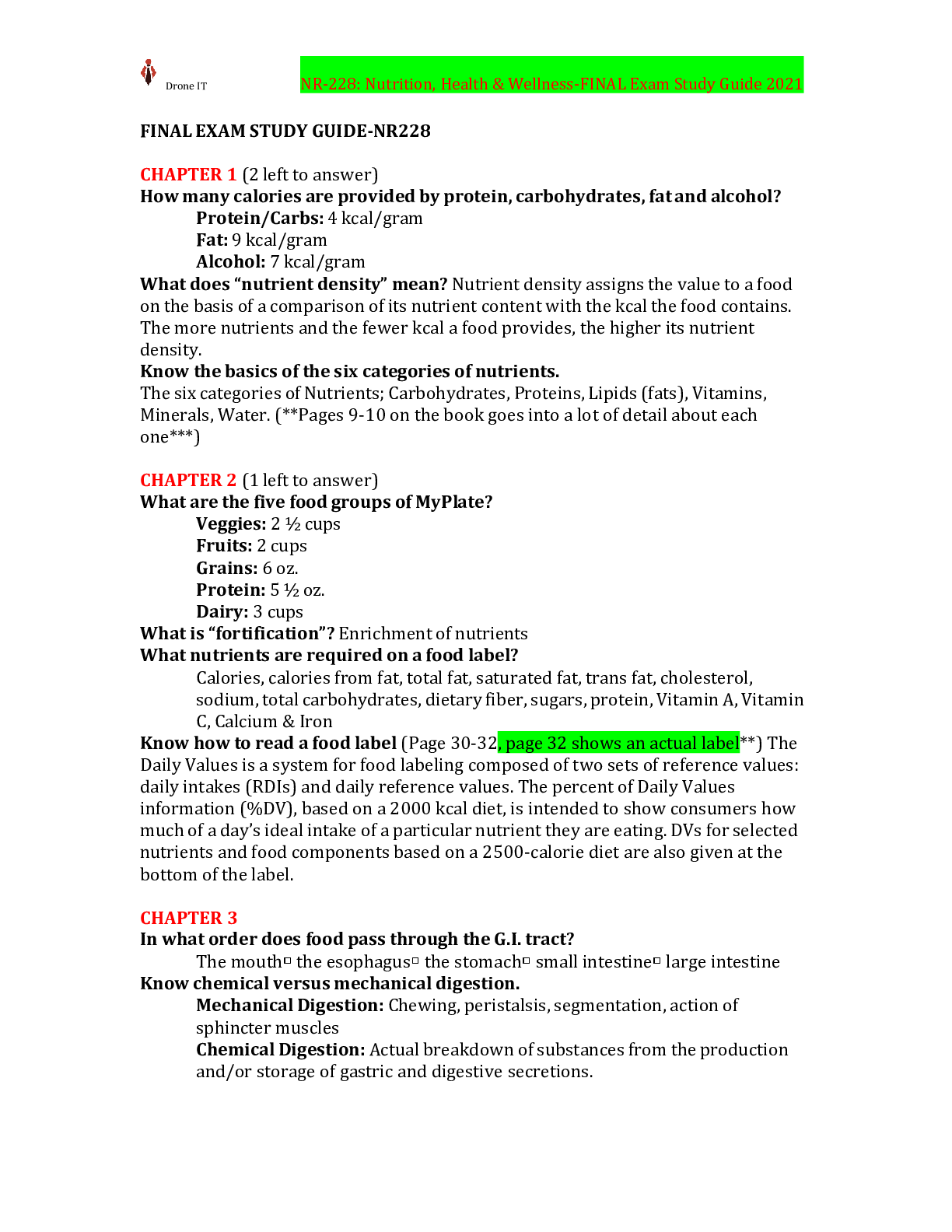
Buy this document to get the full access instantly
Instant Download Access after purchase
Add to cartInstant download
We Accept:

Reviews( 0 )
$15.00
Document information
Connected school, study & course
About the document
Uploaded On
Sep 23, 2021
Number of pages
4
Written in
Additional information
This document has been written for:
Uploaded
Sep 23, 2021
Downloads
0
Views
68

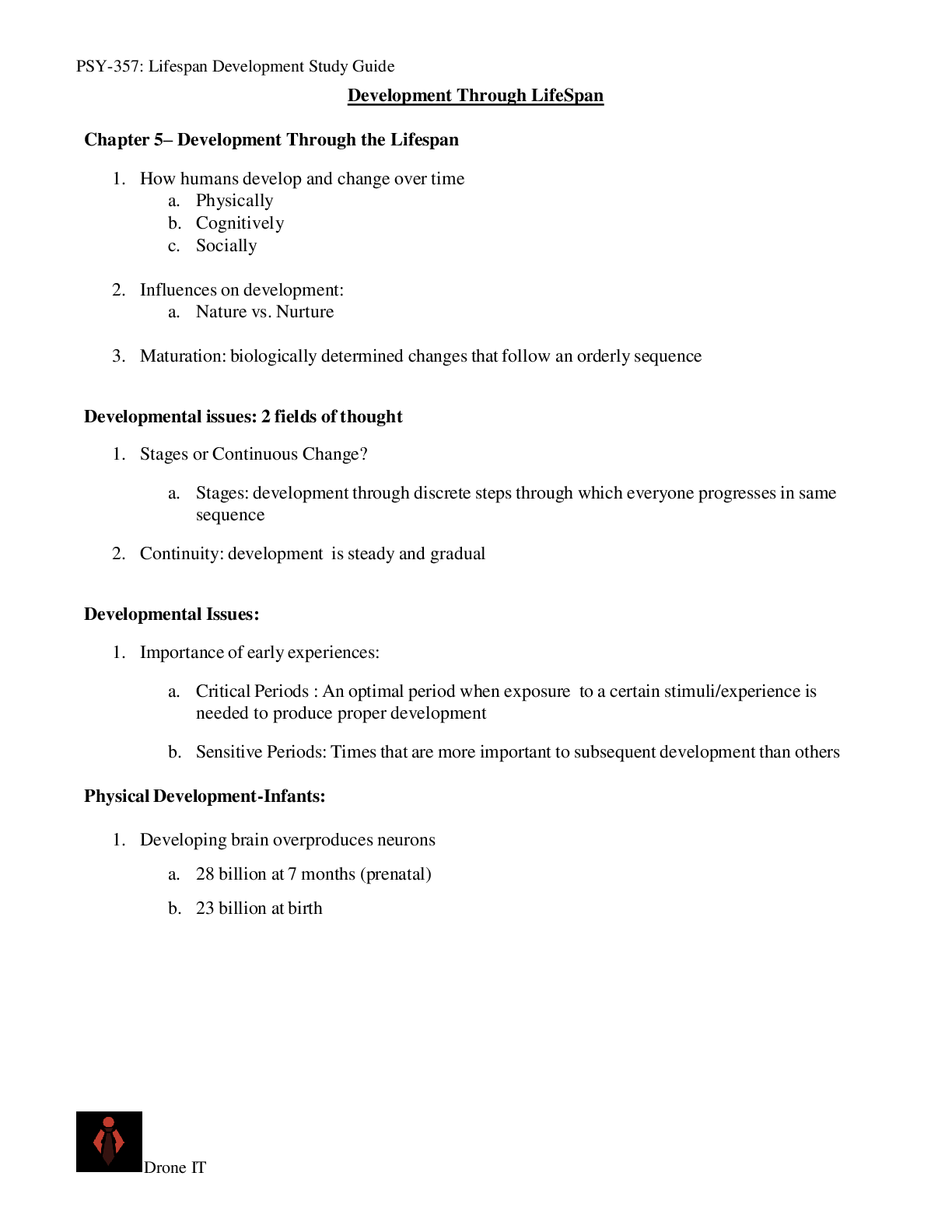
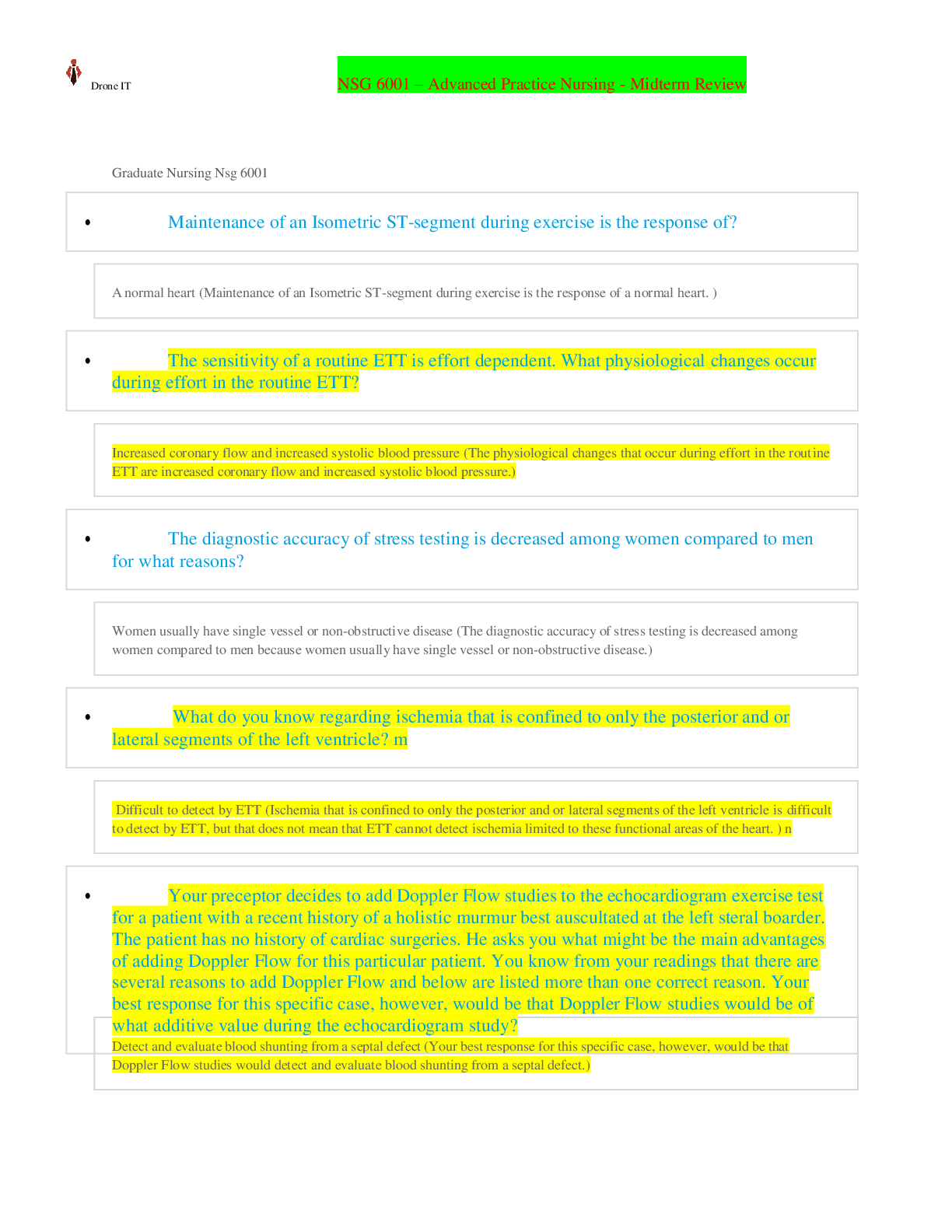
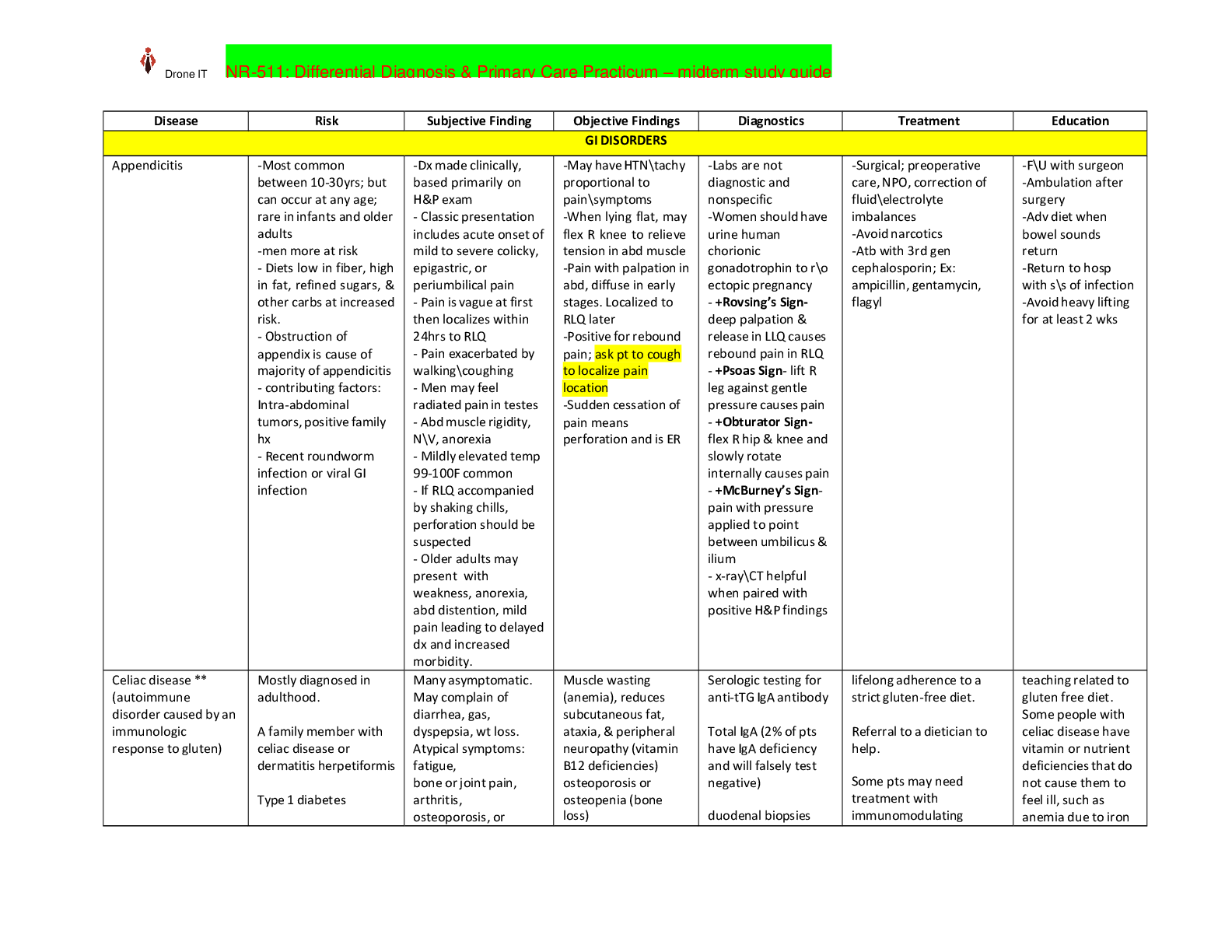
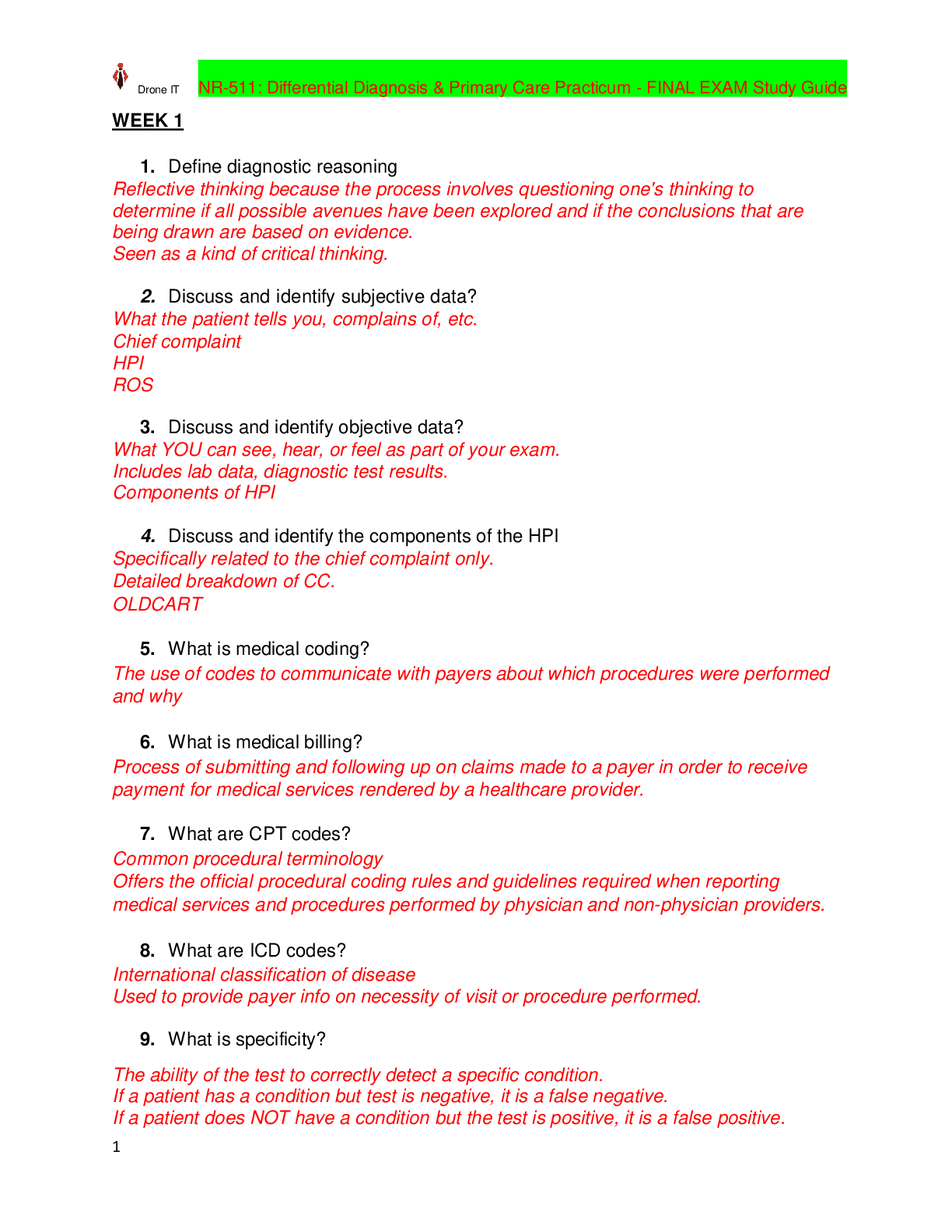
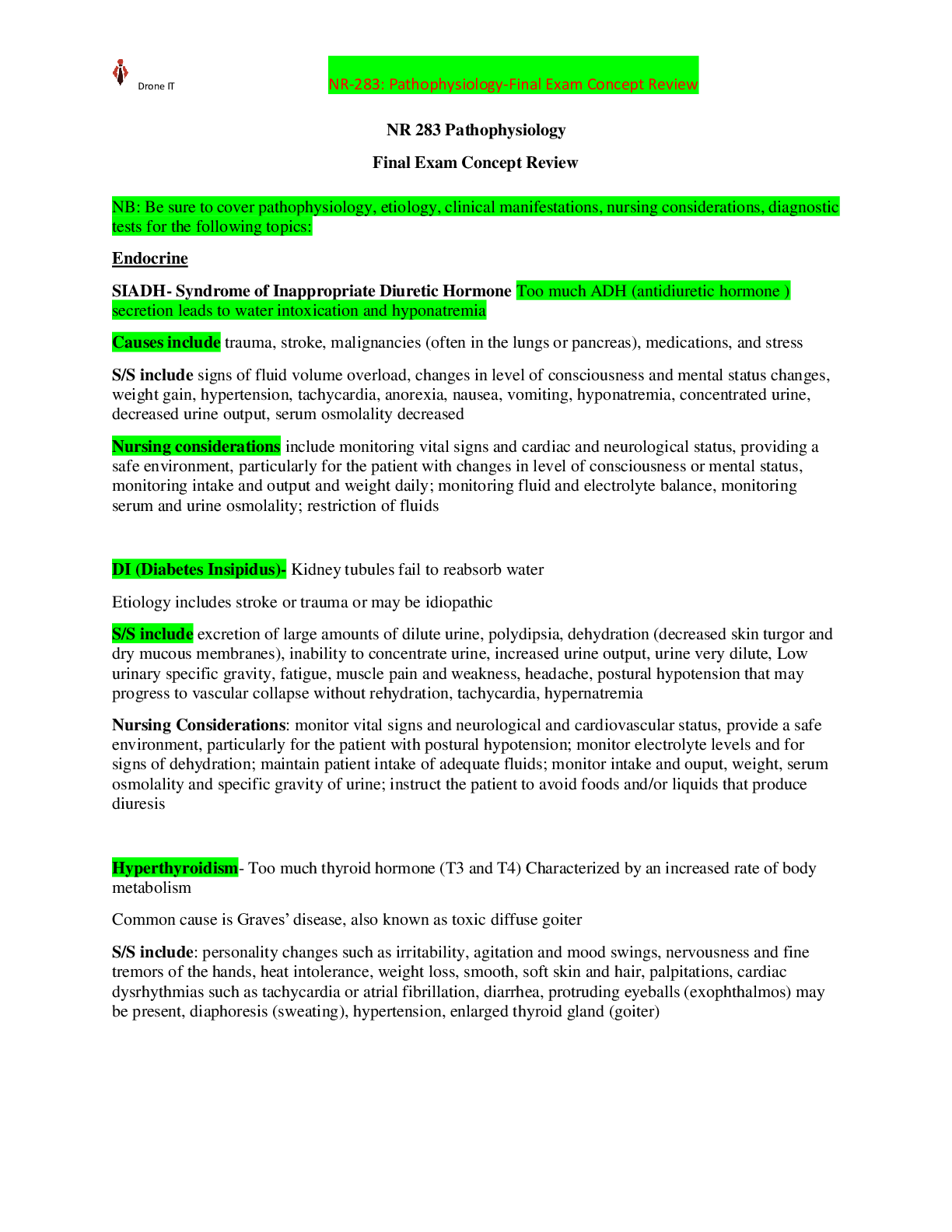
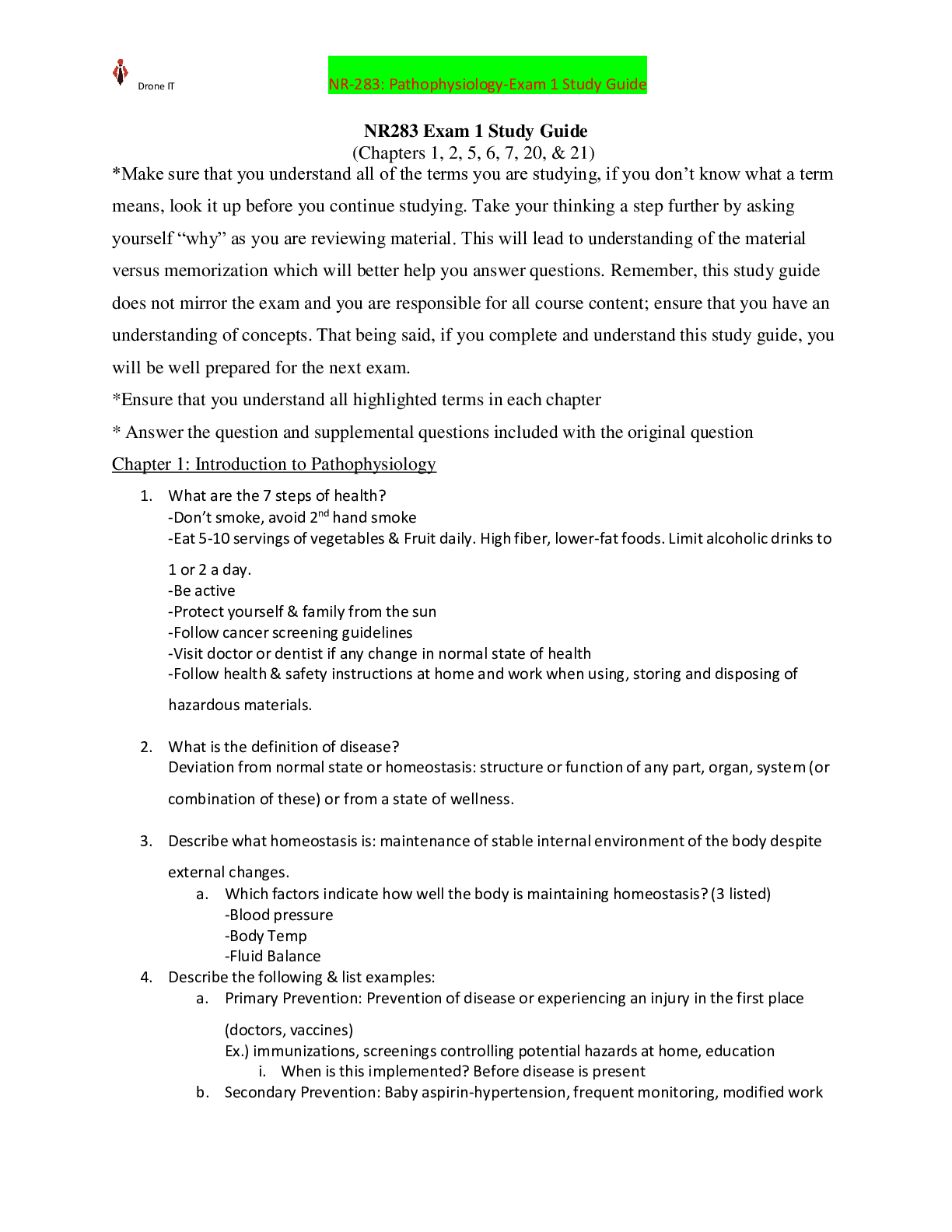

 A Graded.png)
